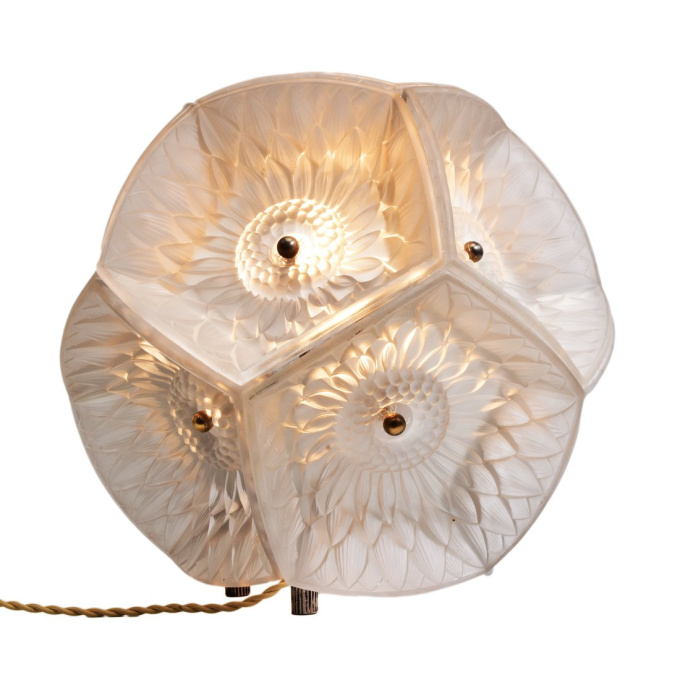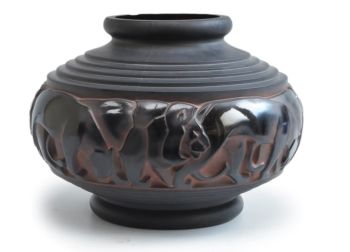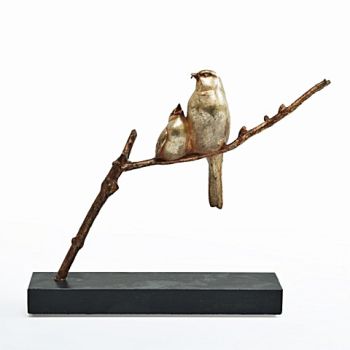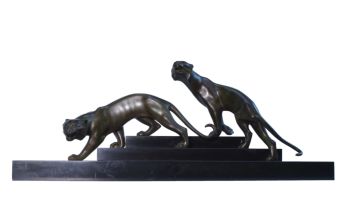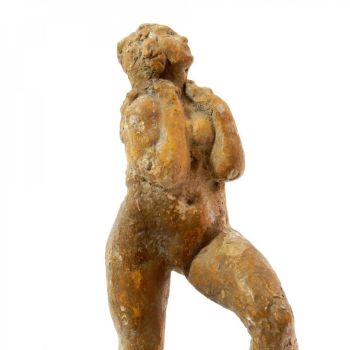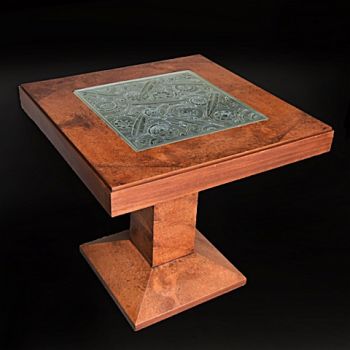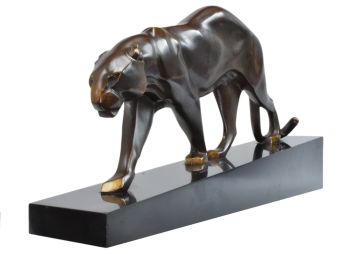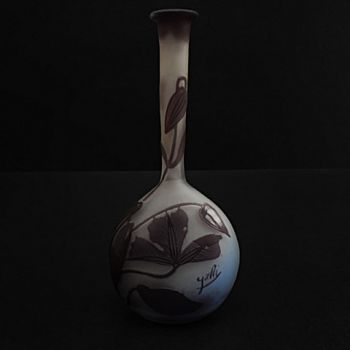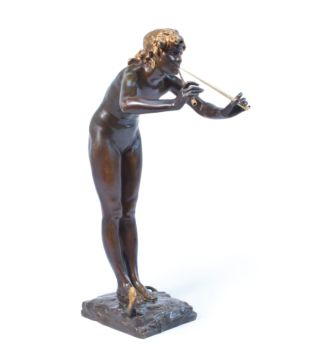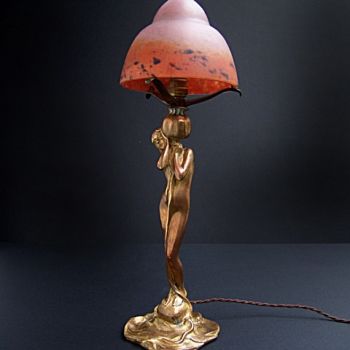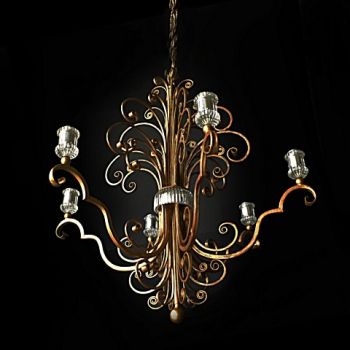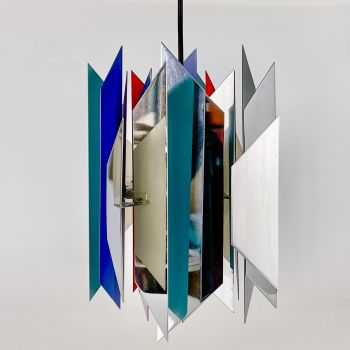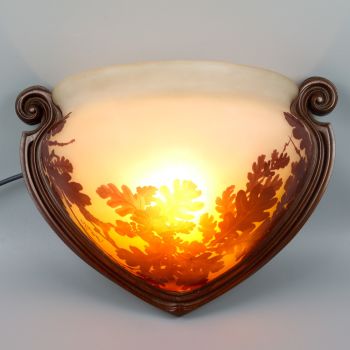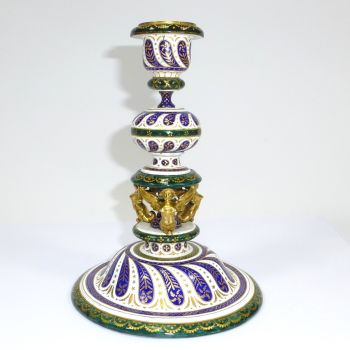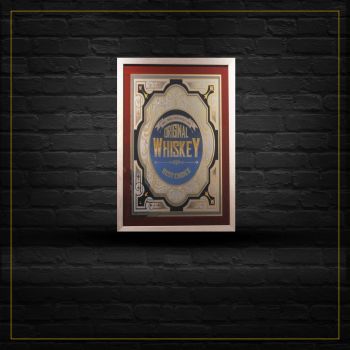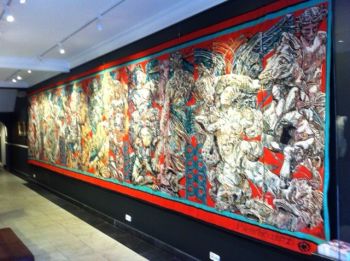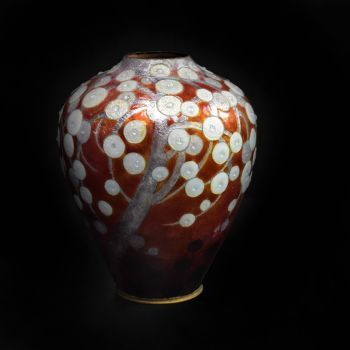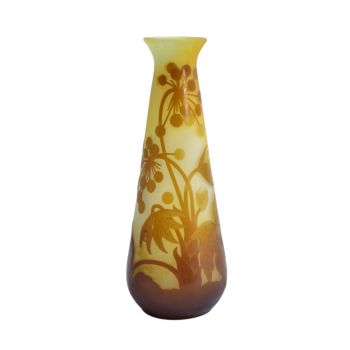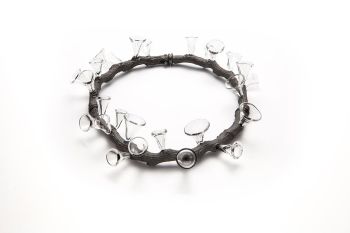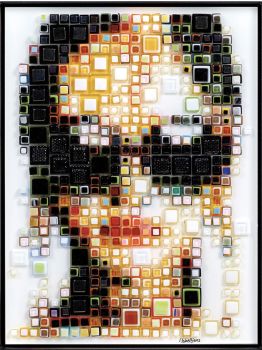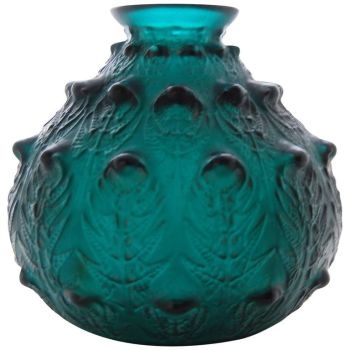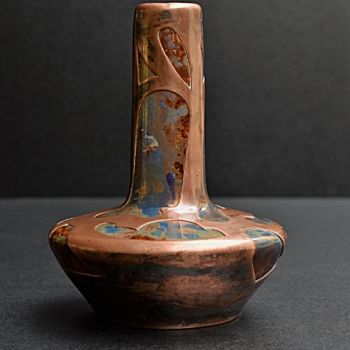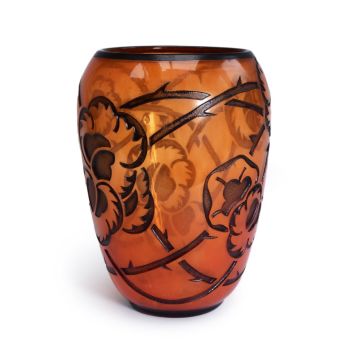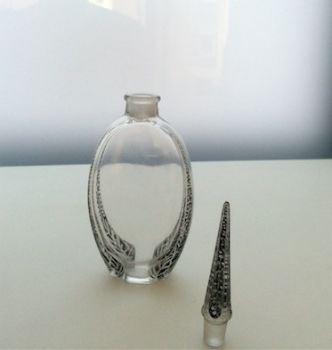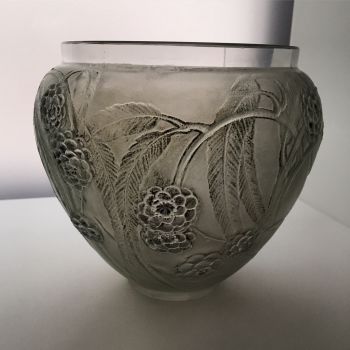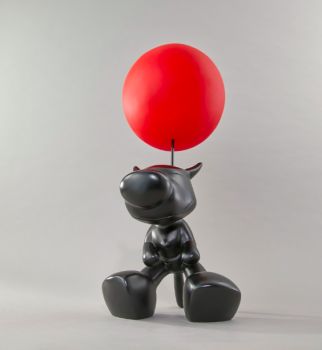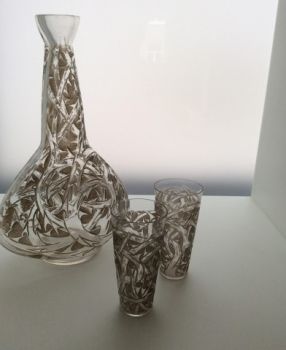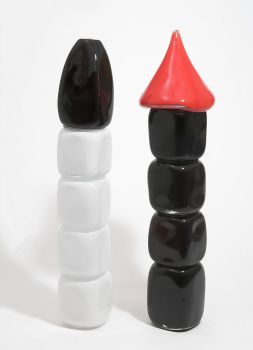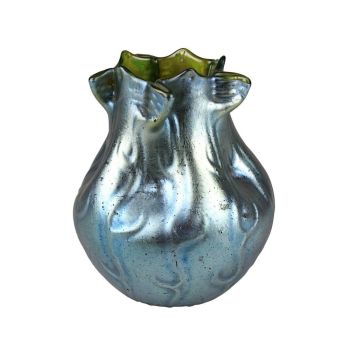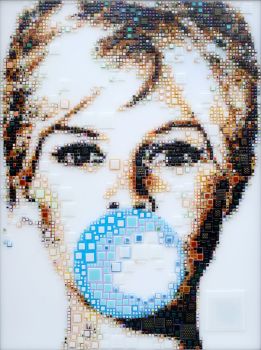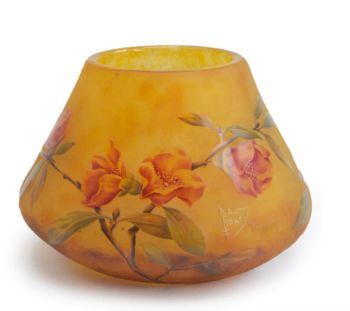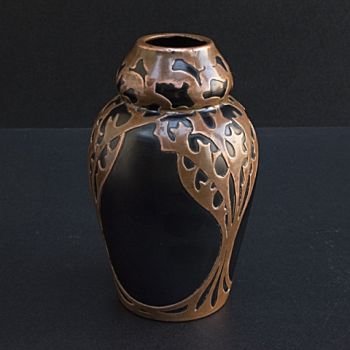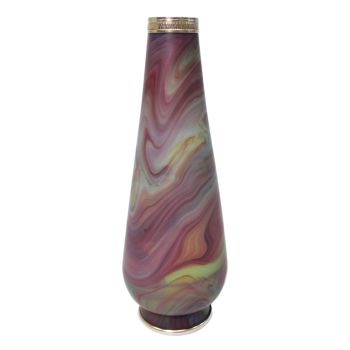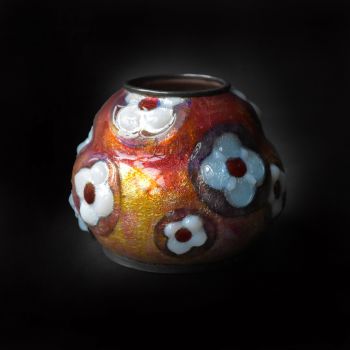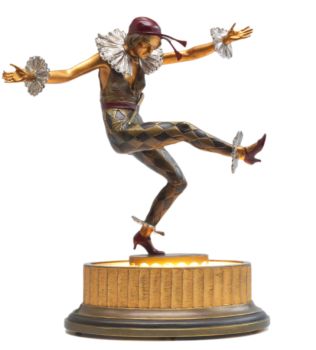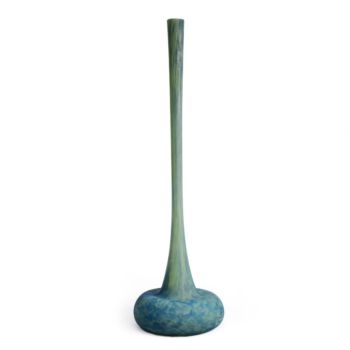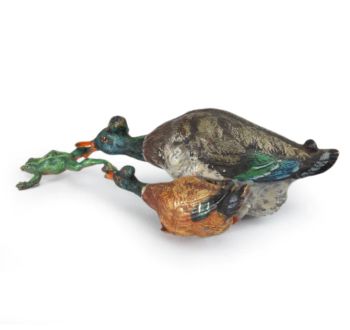'Sunflower lamp' 1930
Pierre d'Avesn
Glass
35 ⨯ 35 ⨯ 35 cm
€ 4.850
Het Ware Huis
- About the artworkPIERRE D'AVESN
'Sunflower lamp'
1930, France
Normal price
€4,850.00 EUR
The sunflower closely follows the position of the sun so that the solar energy can be collected optimally. This lamp by Pierre D'Avesn radiates the stored energy of the sunflower in all directions. The sun in the house, you could say. And that makes you really happy, that gives you energy. All 13 panels of 1.5 kg each are signed. A unique handmade construction forms one sphere from the satin-finished panels. This lamp was way ahead of its time in the 1930s.
Pierre D'Avesn, or Pierre Girre, created iconic designs in the Art Deco period. Initially for René Lalique, then for Daum and others. - About the artist
Pierre d'Avesn, pseudonym of Pierre Girre (France, 1901-1990)
Pierre d'Avesn joined René Lalique at the age of 14. There he learned the technique of glass casting in moulds, a technique that René Lalique had developed. In the same period he also studied at the École Nationale Supérieure des Arts Décoratifs, where he was a student of François Décorchemont.
Pierre d'Avesn stays with Lalique for 12 years, during which time he was also allowed to design a number of well-known art deco pieces, such as the famous 'Serpent' vase from 1925. However, he was not allowed to put his name on the vase .
In 1926 he decided to leave René Lalique and had his own designs executed by Cristallerie de Saint-Remy. Nevertheless, in 1927 he decided to work for Daum. Paul Daum had just taken over the Croismare factory and wanted to make pressed art deco glass from pressed glass. (Verrerie d'Art Loraine). Actually a cheaper line than the more prestigious Daum glass and more in the style of Lalique, intended for the luxury department stores and the American market. Pierre d'Avesn was put in charge of production and design. The glass (lamps, vases and utensils) was signed under various names 'Val', 'Lorain' or 'Verreries de Belle-Etoile'. But he had learned from his experiences at Lalique and was allowed to sign his own key designs with his own name. It is said that Pierre d'Avesn only signed the more important pieces in full with P. d'Avesn, France. Already in 1932 the factory had to close because of the enormous crisis that also reached Europe from the US, there are also sources that mention 1936.
Pierre d'Avesn then worked for Verlys for a few more years, until the outbreak of WWII. He also continued to create his own designs, which he had produced by Choisy-le-Roi. He also started working there in 1945, and in 1949 the company was taken over by Sèvres. He continued to work there until a late age, still using the old glass techniques. He sometimes also made use of the old pre-war molds, but also designed contemporary glass. Choisy-le-Roi was a company that originally made molds for artists' own designs, they also made glass for Etling and Hunebelle in the 1930s.
Are you interested in buying this artwork?
Artwork details
Related artworks
- 1 - 1 / 1
René Lalique
An early vase 'Bluets' designed by Rene Lalique (1860-1945)1910 - 1920
Price on requestLennart Booij Fine Art and Rare Items
1 - 4 / 24Unknown artist
A MARINE IVORY NETSUKE OF A DUTCHMAN HOLDING A CHINESE FAN18th century
Price on requestZebregs & Röell - Fine Art - Antiques
1 - 4 / 24René Lalique
A very rare deep green ‘Fougeres’ Vase designed by R. Lalique1912
€ 8.950Lennart Booij Fine Art and Rare Items
 Curated by
Curated bySilla Scheepens
Unknown artist
An Indian part-gilt silver-clad ceremonial sceptre or mace with a tiger’s head1850 - 1900
Price on requestZebregs & Röell - Fine Art - Antiques
 Curated by
Curated byDanny Bree
1 - 4 / 24- 1 - 4 / 12

